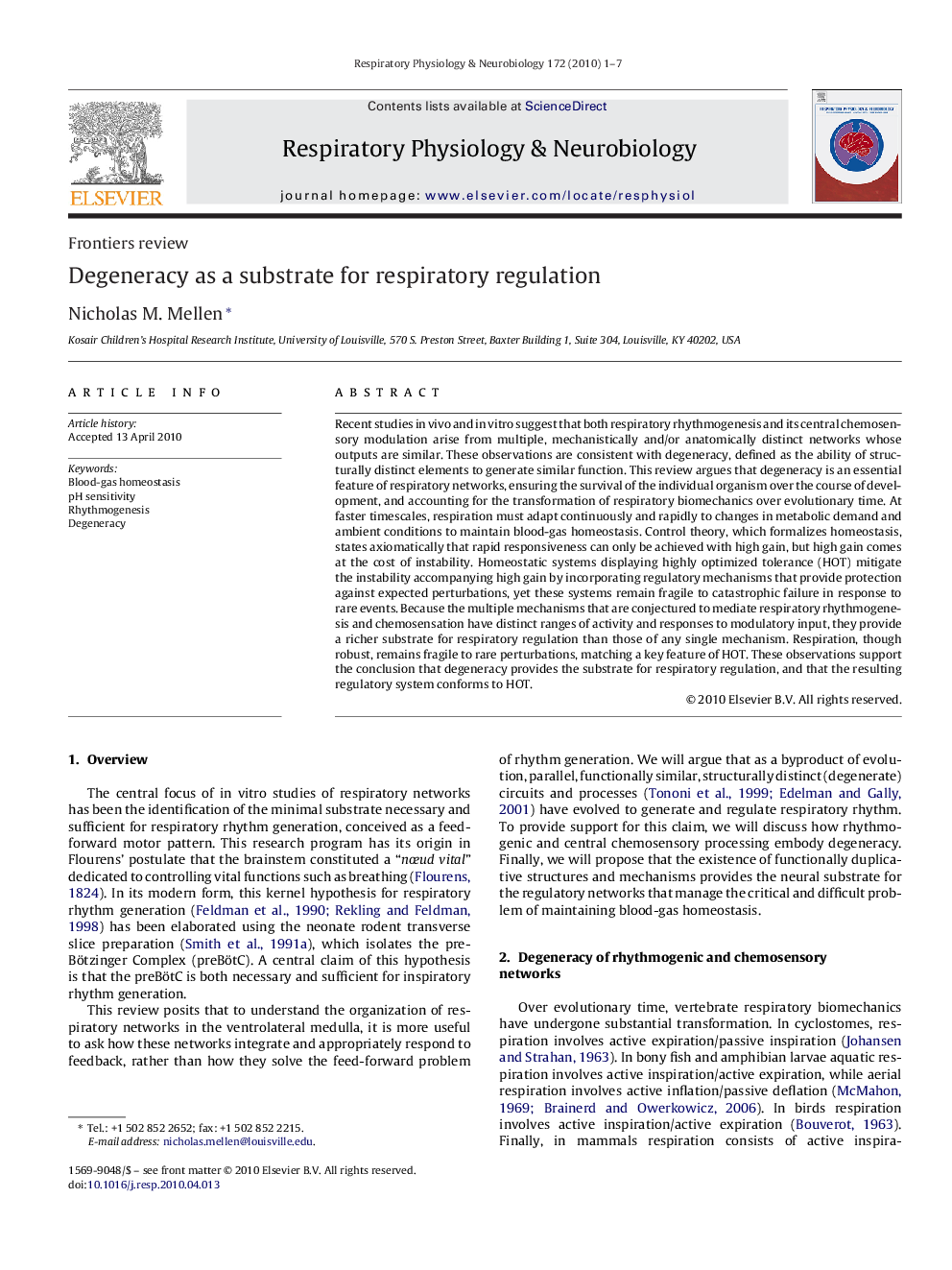| Article ID | Journal | Published Year | Pages | File Type |
|---|---|---|---|---|
| 2847662 | Respiratory Physiology & Neurobiology | 2010 | 7 Pages |
Recent studies in vivo and in vitro suggest that both respiratory rhythmogenesis and its central chemosensory modulation arise from multiple, mechanistically and/or anatomically distinct networks whose outputs are similar. These observations are consistent with degeneracy, defined as the ability of structurally distinct elements to generate similar function. This review argues that degeneracy is an essential feature of respiratory networks, ensuring the survival of the individual organism over the course of development, and accounting for the transformation of respiratory biomechanics over evolutionary time. At faster timescales, respiration must adapt continuously and rapidly to changes in metabolic demand and ambient conditions to maintain blood-gas homeostasis. Control theory, which formalizes homeostasis, states axiomatically that rapid responsiveness can only be achieved with high gain, but high gain comes at the cost of instability. Homeostatic systems displaying highly optimized tolerance (HOT) mitigate the instability accompanying high gain by incorporating regulatory mechanisms that provide protection against expected perturbations, yet these systems remain fragile to catastrophic failure in response to rare events. Because the multiple mechanisms that are conjectured to mediate respiratory rhythmogenesis and chemosensation have distinct ranges of activity and responses to modulatory input, they provide a richer substrate for respiratory regulation than those of any single mechanism. Respiration, though robust, remains fragile to rare perturbations, matching a key feature of HOT. These observations support the conclusion that degeneracy provides the substrate for respiratory regulation, and that the resulting regulatory system conforms to HOT.
